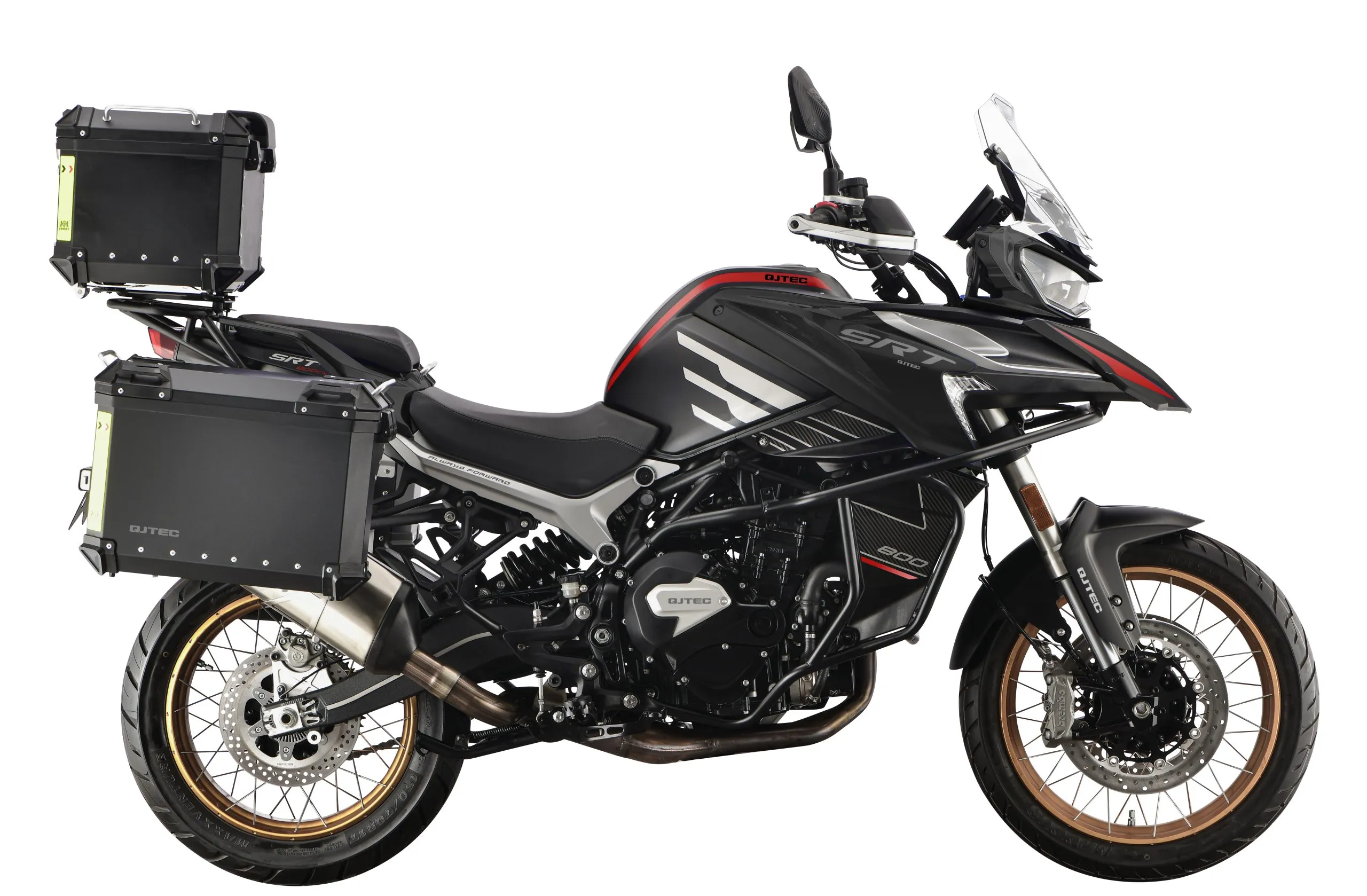2024
Lifan QJTEC SRT 800 CX - Specifications & Review

Article Complete Info
| Articleid | 134453 |
|---|---|
| Category | Sport touring |
| Make | Lifan |
| Model | QJTEC SRT 800 CX |
| Year | 2024 |
Chassis, Suspension, Brakes & Wheels
| Frametype | DIMENSIONS |
|---|---|
| Frontbrakes | Double disc. ABS. |
| Frontbrakesdiameter | 320 mm (12.6 inches) |
| Frontsuspension | Telescopic upside-down |
| Fronttyre | 110/80-R19 |
| Rearbrakes | Single disc. ABS. |
| Rearbrakesdiameter | 260 mm (10.2 inches) |
| Rearsuspension | Telescopic coil spring oil damped |
| Reartyre | 150/70-R17 |
Engine & Transmission
| Borexstroke | 28.0 x 65.7 mm (1.1 x 2.6 inches) |
|---|---|
| Clutch | Wet multi-plate |
| Coolingsystem | Liquid |
| Displacement | 799.0 ccm (48.75 cubic inches) |
| Enginetype | Twin, four-stroke |
| Fuelsystem | Injection |
| Gearbox | 6-speed |
| Power | 91.2 HP (66.6 kW)) @ 9000 RPM |
| Torque | 77.0 Nm (7.9 kgf-m or 56.8 ft.lbs) @ 8000 RPM |
| Transmissiontypefinaldrive | Chain (final drive) |
| Valvespercylinder | 4 |
Other Specifications
| Carryingcapacity | Saddle bags, top box |
|---|---|
| Coloroptions | Black/red, black/blue |
| Comments | Small windscreen. Chinese made bike. Sold in the US. |
| Starter | Electric |
Physical Measures & Capacities
| Fuelcapacity | 24.00 litres (6.34 US gallons) |
|---|---|
| Groundclearance | 190 mm (7.5 inches) |
| Overallheight | 1405 mm (55.3 inches) |
| Overalllength | 2260 mm (89.0 inches) |
| Overallwidth | 950 mm (37.4 inches) |
| Seatheight | 835 mm (32.9 inches) If adjustable, lowest setting. |
| Weightincloilgasetc | 263.0 kg (579.8 pounds) |
About Lifan
Country of Origin:
China
Founder:
Yin Mingshan
Best Known For:
High-volume commuters/engines, global exports, and durable utility bikes
Company History
Lifan scaled from a small workshop into one of China’s major motorcycle and engine manufacturers by focusing on reliable commuter singles tailored to developing markets. The company’s strengths—casting quality, process control, and supplier discipline—show up in engines that start easily, sip fuel, and tolerate rough roads. Lifan’s export footprint is vast: Latin America, Africa, and Asia use Lifan-powered bikes for delivery, taxis, and family transport, supported by parts networks and documentation that independent mechanics trust. As global regulations tightened, Lifan adopted EFI, catalysts, and stronger braking, bringing modern safety and emissions compliance to segments long defined by carburetors. The firm also supplies engines and CKD kits to regional assemblers, multiplying local jobs and ensuring service familiarity. Historically, Lifan’s impact is infrastructural: millions of affordable trips that connect workers to jobs and kids to schools. While enthusiasts may chase premium marques, the quiet success of Lifan is measured in uptime and the way its engines underpin countless daily economies.
